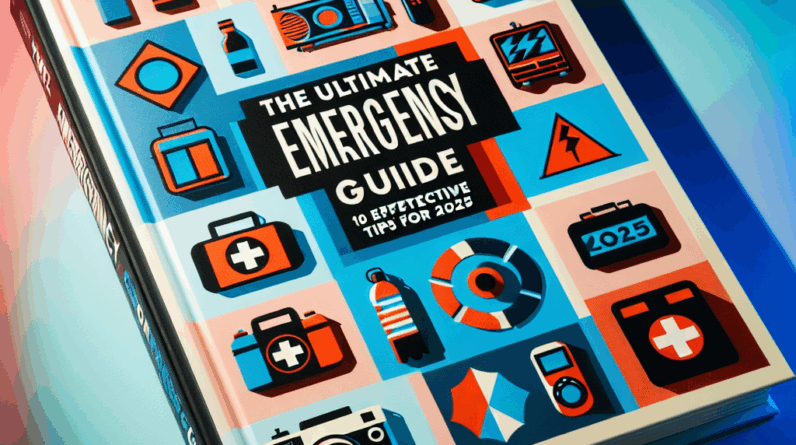The phenomenon of sudden climate changes presents unique challenges and opportunities for preparedness. These abrupt shifts in weather can range from unexpected heatwaves to sudden torrential rains, deeply affecting our daily lives and safety. Understanding these changes and how to effectively prepare for them is crucial in maintaining resilience in the face of unpredictability.
Understanding the Risks
Sudden climate changes are essentially those abrupt alterations in weather patterns that catch us off guard. Imagine relishing a sunny day when suddenly, a heavy storm hits. These can be attributed to natural occurrences or anthropogenic climate alterations. Staying updated with scientific research helps us connect these unusual weather patterns to broader atmospheric cycles, empowering us with knowledge to foresee and mitigate risks. Moreover, keeping abreast of reliable sources like climate studies or local news alerts equips us with timely information to handle these swift changes effectively.
Identifying Local Climate Trends
Identifying specific climate trends within your locality is vital for personal preparedness. Different regions exhibit unique weather behaviors; for instance, an increase in severe storms might be noted during what were traditionally milder months. Engaging with local environmental groups provides insights into these regional climatic shifts and offers real-time updates that could be crucial. Additionally, maintaining a personal weather journal where you record daily weather details can reveal patterns that might not be immediately obvious but are invaluable for future planning.
Assessing Vulnerabilities
Understanding that vulnerability to climate impacts varies widely among individuals is key. Some may face higher risks from floods, while others from wildfires. Taking time to evaluate how susceptible your immediate environment—your home, neighborhood—is to these factors opens your eyes to potential dangers. Participating in community preparedness initiatives enhances collective safety. It’s also important to consider personal factors such as health, financial stability, and mobility, and to develop a personalized plan to address these.
Creating a Preparedness Plan
# Emergency Essentials
Keeping an emergency kit prepared is fundamental. Essentials like water, non-perishable food, flashlights, batteries, and medications should be included, along with personal items that provide comfort in stressful times. Regular maintenance of your supplies by replacing them periodically ensures they remain useful when needed most.
# Communication Strategies
Effective communication is crucial during emergencies. Establishing predetermined meeting points and communication channels with family and friends helps reduce chaos during critical times. Utilizing modern communication tools like group chats or emergency apps ensures everyone stays informed. It’s also essential to educate children on emergency protocols to ensure they feel secure and knowledgeable about what to do.
# Practice Makes Perfect
Regularly practicing your emergency plans through drills transforms theory into effective action. These rehearsals help identify gaps in your plans and improve everyone’s confidence and readiness. Reflecting on what works well and what doesn’t during these drills allows for continual improvement of your emergency strategies.
Staying Informed and Adapting
# Regular Updates on Climate Conditions
Keeping a regular schedule for checking weather updates and local news helps you stay ahead of potential climate risks. While technology is a helpful tool, integrating information from community resources provides a broader perspective on impending weather conditions.
# Participating in Community Initiatives
Active participation in community efforts geared towards climate resilience fosters stronger collective preparedness. These initiatives not only provide valuable knowledge and support but also enhance community bonding and can influence local climate policies.
# Adapting Your Lifestyle
Proactively adapting your lifestyle to mitigate future climate risks involves integrating sustainable practices like reducing plastic use or composting at home. These small adjustments contribute significantly to broader climate resilience efforts, inspiring others within your community to follow suit.
FAQs
# 1. What are sudden climate changes?
Sudden climate changes involve unexpected, significant alterations in weather conditions, driven by both natural and human factors.
# 2. How can I assess my vulnerabilities regarding climate changes?
Assess your vulnerabilities by evaluating your location, nearby infrastructure, community preparedness, personal health, and resource availability. Engage in community preparedness efforts for enhanced resilience.
# 3. What should be included in an emergency preparedness kit?
Include essentials like water, food, a flashlight, batteries, first-aid items, necessary medications, and personal comfort items. Regularly update these supplies to ensure their usability.
# 4. How often should I check for climate updates?
Establish a routine, either daily or weekly, to consistently check climate updates through apps, news, or community networks to stay well-informed.
# 5. Why is community participation important for climate preparedness?
Community involvement enhances shared knowledge, resources, and overall resilience, making it easier to adapt and respond effectively to climate challenges.




